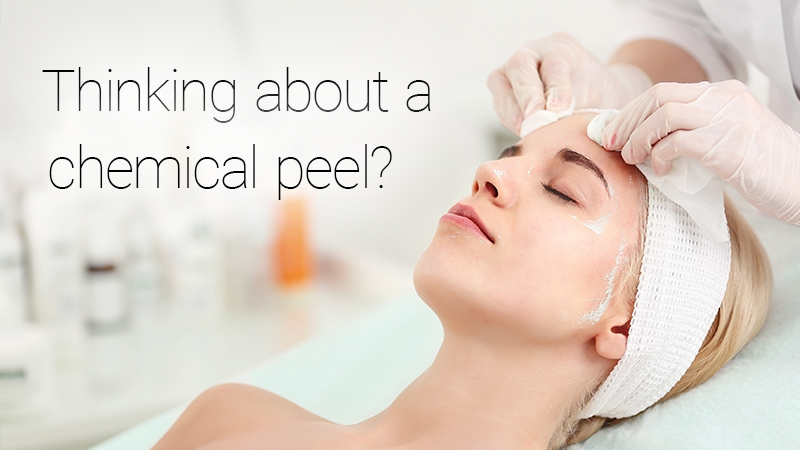
Reveal Your Glow with Professional Chemical Peel Treatments in Kota
Chemical Peels are a medically supervised, non-invasive treatment that gently exfoliate the skin using specialized solutions to remove dead cells, stimulate collagen, and reveal fresher, healthier skin. This procedure is ideal for improving skin texture, reducing pigmentation, controlling acne, and achieving a radiant, even-toned complexion.
At Dr. Ashima’s Skinssence Clinic, Kota, we customize chemical peels based on your skin type and concerns. Every session is conducted under the expert guidance of Dr. Ashima Madan, ensuring safety and optimal results.
Why Choose Chemical Peel at Skinssence Clinic?
- Doctor-supervised procedure for safe, controlled exfoliation.
- Customized peel solutions for pigmentation, acne, or anti-aging concerns.
- Suitable for sensitive, oily, or combination skin.
- Minimal downtime — quick recovery with visible results.
- Long-term improvement in skin texture, tone, and clarity.
"Chemical peels are a precise dermatological approach to rejuvenate the skin, improve tone, and address persistent skin concerns," says Dr. Ashima Madan, leading skin doctor and aesthetic physician in Kota.
Who Can Benefit from a Chemical Peel?
Chemical peels are suitable for men and women of all ages, and especially recommended for:
- Individuals with dull, uneven, or pigmented skin
- People struggling with acne, blackheads, or post-acne marks
- Those looking to reduce fine lines and early signs of aging
- Brides and grooms preparing for weddings or photoshoots
- Anyone seeking regular skin maintenance for glow and clarity
How Chemical Peels Work — Step-by-Step
Each session at Skinssence Clinic follows a controlled, safe process:
- Skin Assessment: Doctor examines skin type, sensitivity, and concerns.
- Cleansing: Gentle medical-grade cleanser removes surface impurities.
- Application of Peel: Customized chemical solution is applied evenly on the skin.
- Controlled Exfoliation: Solution works to peel dead cells and promote cell turnover.
- Neutralization & Hydration: Peel is neutralized, followed by soothing serums and moisturizers.
- Post-Peel Care: Sunscreen and aftercare advice to protect skin and maintain results.
| ✔️ Improves skin texture and clarity | ✔️ Reduces pigmentation and sun damage |
| ✔️ Minimizes fine lines and early signs of aging | ✔️ Controls acne and post-acne marks |
| ✔️ Promotes natural collagen production | ✔️ Safe and effective for most skin types |
Chemical Peel Price in Kota: Starting from ₹2,000 per session*
*Final price depends on peel type and skin requirements after consultation.
Why Skinssence is Trusted for Chemical Peels in Kota
- Expert doctor supervision by Dr. Ashima Madan.
- Customized treatment plans for each skin type and concern.
- Safe, hygienic, and medical-grade clinic environment.
- Proven results with thousands of satisfied patients.
- Tailored pre-wedding and special-event skincare packages.
Chemical Peel Reviews – Real Patients, Real Results
“After 2 sessions of chemical peel at Skinssence, my acne scars and pigmentation have visibly reduced. My skin feels smoother and brighter!” — Aditi R. (Kota)
“Dr. Ashima’s approach is precise and safe. The peel helped even out my skin tone before my wedding. Highly recommended!” — Rahul K.
“I was hesitant about chemical peels, but the doctor explained everything. Results are fantastic, and my skin looks healthy and refreshed.” — Priya M.
Frequently Asked Questions about Chemical Peels in Kota
A chemical peel is a dermatological treatment that uses medical-grade solutions to exfoliate the top layer of skin. This promotes new cell growth, evens skin tone, reduces pigmentation, and improves texture.
Yes, chemical peels can be customized for oily, dry, sensitive, or combination skin. The doctor selects the solution strength and type based on your skin concerns and tolerance.
Most peels are gentle and cause minimal discomfort. Mild redness or flaking may occur for 1–3 days, but normal activities can usually be resumed immediately.
Depending on the peel type and skin condition, sessions are generally scheduled every 3–6 weeks. Your doctor will recommend a plan for optimal results.
Yes. Peels can significantly improve mild acne scars, pigmentation, sun damage, and uneven skin tone. For deeper scars, combination treatments may be advised.
Yes. Supervised peels provide a refreshed, glowing look ideal for pre-event skin preparation. Your doctor will select a peel that balances radiance with minimal downtime.
Absolutely. Men can benefit from peels to control oiliness, reduce pigmentation, and improve skin texture and clarity.
Refresh Your Skin with a Chemical Peel
Book your session with Dr. Ashima today and reveal smoother, brighter, and healthier skin.
Book NowContact: Skinssence Laser & Skincare Clinic, Kota
4 C 15, Sector - 4, Talwandi, Kota, Rajasthan 324005
+91 9509197578 | WhatsApp Us
Other Related Treatments
Your skin deserves expert care — experience the confidence of clear, glowing, and healthy skin at Dr. Ashima’s Skinssence Clinic, Kota.
